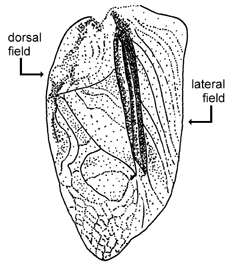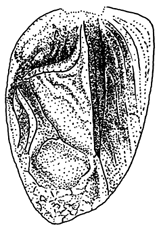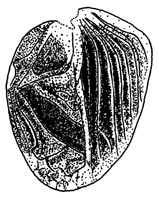from Nickle and Walker 1974 |
||

|

|
The color pattern of the forewing is the easiest means (other than song) of distinguishing sand field crickets from the other two species that are common in lawns, pastures, and roadsides. The pattern is best viewed by extending the wing to the side, so that light is passing through the wing rather than merely reflecting from it. The key feature in the pattern in the sand field cricket is that veins and crossveins in the lateral field are paler than their background. |
field crickets |
||
| On the other hand, in the southeastern and Texas field crickets, the lateral field is pale and the venation is inconspicuous. There is a bold dark longitudinal stripe at the juncture of the dorsal and lateral fields that the sand field cricket lacks. | ||

|

The forewings of the taciturn wood cricket are shorter
and usually blacker than those of the southern wood cricket. |
|
Return to |
||